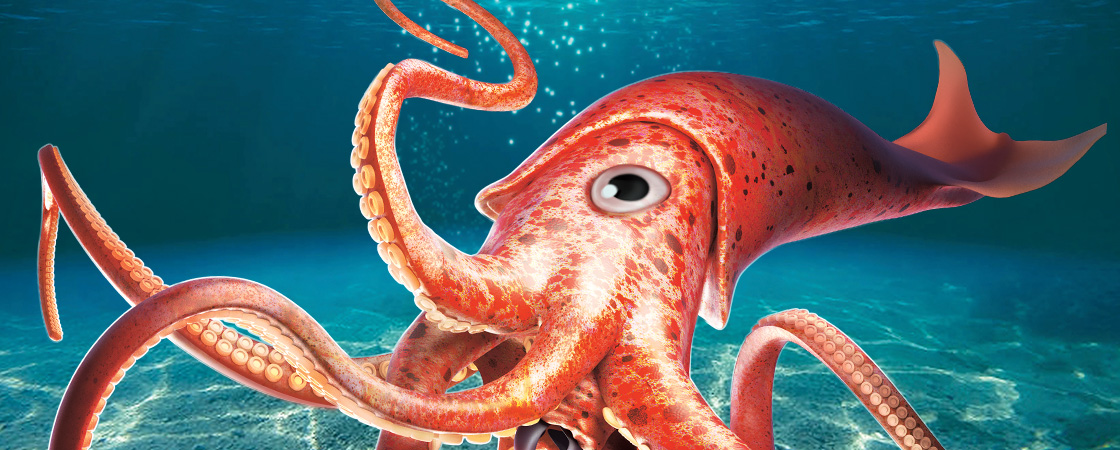SHUTTERSTOCK.COM
It was a chilly fall day in 1873. A fisherman was happily sailing near Canada. The water was still and calm. Then he saw something floating near his boat. What could it be?
He sailed toward the object and poked it with a hook. The thing moved. Suddenly, a giant creature rose out of the ocean. It looked like a monster from a scary movie. It waved its tentacles wildly. One of them landed on the boat.
The fisherman was terrified. But he acted fast. He grabbed an ax and chopped off the tentacle. The beast let go of the boat. Then it disappeared underwater. The sea was quiet once again.
The fisherman was left with a 19-foot tentacle and a big question: What was that mysterious sea monster?
It was a chilly day in 1873. A fisherman was sailing near Canada. The water was still and calm. Then he saw something. It was floating near his boat. What could it be?
He sailed toward the object. He poked it with a hook. The thing moved. Suddenly, a giant creature rose out of the ocean. It looked like a monster from a scary movie. It waved its tentacles. One of them landed on the boat.
The fisherman was terrified. But he acted fast. He grabbed an ax and cut off the tentacle. The beast let go of the boat. Then it disappeared underwater. The sea was quiet once again.
The fisherman was left with a 19-foot tentacle and a big question: What was that mysterious sea monster?
It was 1873. A fisherman was sailing near Canada. Suddenly, a giant creature came out of the water. It grabbed the boat with its tentacles.
The fisherman acted fast. He cut off a tentacle with an ax. The beast let go of the boat.
The fisherman wondered: What was that mysterious monster?

